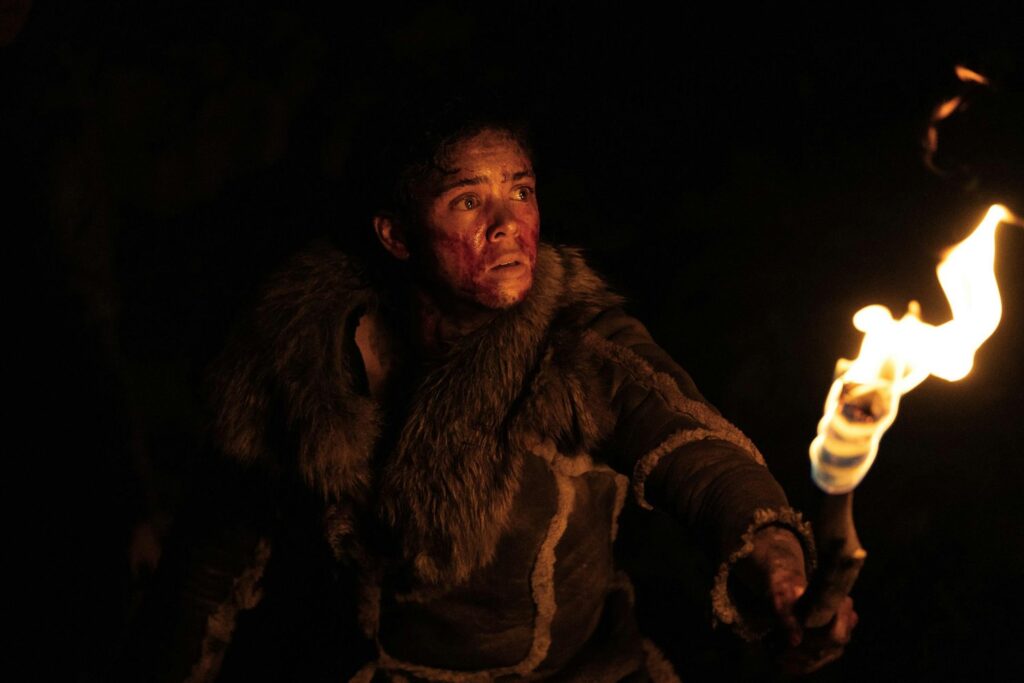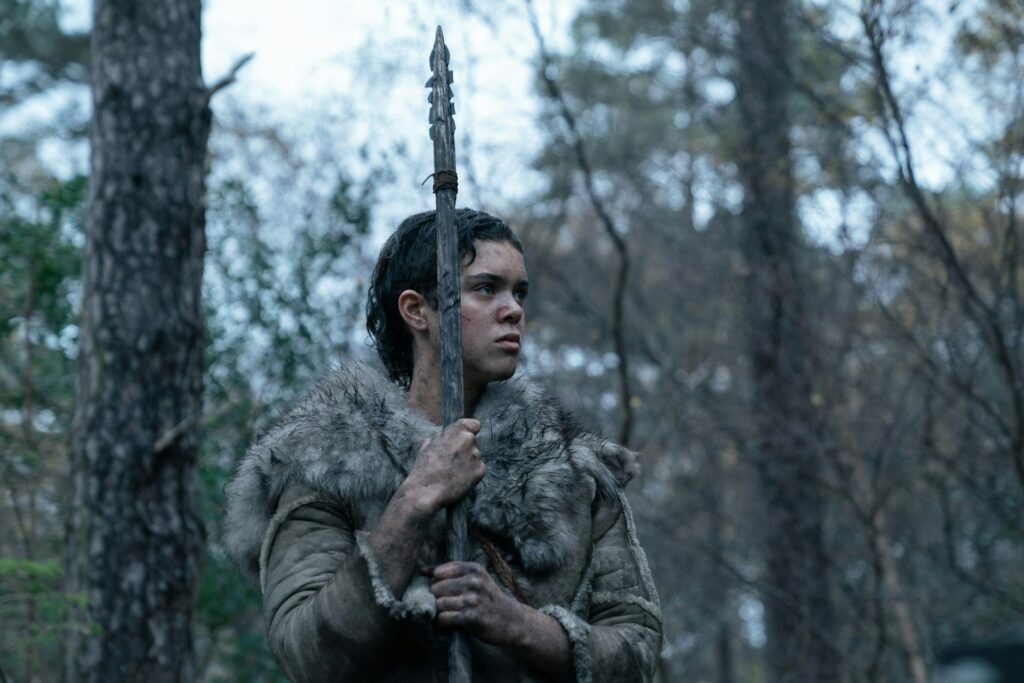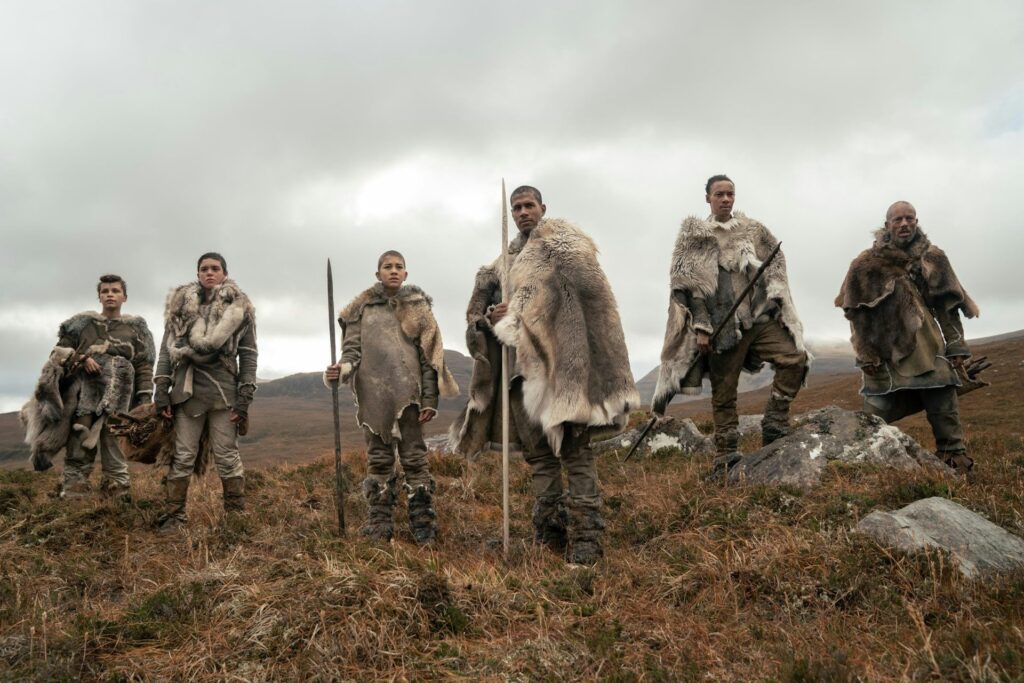How Accurate Is the Stone Age Thriller Out of Darkness?

This article was originally published at The Conversation and has been republished under Creative Commons.
NEITHER THE CHOICE OF genre (survivalist horror) nor time period (43,000 years ago) bodes well for Out of Darkness. After all, films set in the Stone Age tend to be comedic, sexualized, or woefully historically inaccurate. Think Ice Age (2002), Clan of the Cave Bear (1986), or 10,000 B.C. (2008) in which mammoths help build the pyramids. Yet this film is none of these. It goes way beyond expectations with its attempts at historical accuracy, and what’s more, it is fun to watch, especially if suspense or a high body count are your thing.
A film set in the time of modern human and Neanderthal interactions is long overdue, given the better public understanding of this period and Neanderthals being thought of in more humanized terms than they were 10 years ago.
What’s more, as we face more existential threats, there is a greater tendency to look to the distant past for inspiration for how we should live, both physically and emotionally. The producers of Out of Darkness should be applauded for having the guts to tackle some of the real challenges of setting a film in this period.
They have used as authentic a language as possible—hiring linguist Daniel Andersson to create a Stone Age–sounding language especially for the film, translated for the audience using subtitles. They also cast actors with accurate skin tones. The makeup of the group at its heart is realistic, with older and vulnerable members and, refreshingly, a competent, proactive woman lead (who is dressed in appropriate clothing rather than in a fur bikini).
IS THE FILM HISTORICALLY ACCURATE?
Out of Darkness follows a small group of modern humans who set out across the Europe of 43,000 years ago, trying to find new land and rescue the leader’s son, who has apparently been taken by some strange creatures.
There are amazing landscapes, tense scenes, and—as is expected from a survivalist horror—few people left standing after the carnage. For those of us looking for meaning under the macabre, there is a cautionary tale about acting on assumptions and the dangers of rage and fear.
There is plenty of detail here, which fits the evidence we have about this period of the Stone Age (known as the Middle-Upper Paleolithic transition). There’s fitted clothing with fur inside, decorated spears, fire-lighting kits, a rondelle (a bone disc with a central hole), and Neanderthals with raptor feather headdresses.
There are even rather slick references for the knowledgeable. Dead mammoths are shown at the bottom of a ravine modeled on La Cotte de St Brelade, a Neanderthal hunting site on Jersey in the Channel Islands. Neanderthals are shown taking and wearing modern human jewelry as a nod to the Châtelperronian bone pendants found in the south of France.
People are buried at a location that looks remarkably like the famous Neanderthal burial site of Shanidar Cave in Iraq. Even depictions of cannibalism are not at odds with what we know of mortuary practices in the period.
The wider social settings also bring some welcome authenticity. While telling firelight stories of courageous journeys into new lands, the elderly, young, and pregnant work together.
Is Out of Darkness entirely prehistorically accurate? No, of course not. But it goes way beyond most depictions. In reality, Stone Age people would have carried tents and built shelters, not fought over a cold, damp cave. They would also have found a fair bit of food in the tundra rather than be starving. And, of course, it is not clear how the characters in the film managed to shave.
I would also expect links to other groups or perhaps more of a story as to why this group is so isolated. And the voices of the Neanderthals are a bit too far-fetched (more like a squawk rather than a high-pitched language). What’s more, the lack of other living things feels like a missed opportunity to include predators, which were genuinely dangerous and scary in the Stone Age.
STONE AGE BAD GUYS
As a professor of the archaeology of human origins, the one thing I dislike about the film is that subservience to the “bad guys” doesn’t fit with what we know.
The leader of this small band of travelers, Adem (Chuku Modu), is a bit of bully who tells women what to do and say and who supports some hierarchy in which “strays eat last.” Neither the impulsiveness nor the violence fit with what we know of hunter-gatherer populations.
It is also hard to see how humans and Neanderthals could live contemporaneously for as many as 10,000 years with such a mutual wipeout. But given that bloodshed comes with the genre, all of this may be something we need to forgive.
I might perhaps let them get away with this if we accept these people were some kind of dysfunctional outcast party in which dominance tactics might be more tolerated and normal rules didn’t apply.
There is, after all, plenty to love. Out of Darkness offers a great portrayal of a capable Stone Age woman protagonist—and equally capable Neanderthal woman. Beyah (Safia Oakley-Green) is adept with knife, spear, and any convenient rock, dispatching people whenever the occasion demands (which seems to be pretty regularly).
There will always be some gripes over accuracy here and there, but Out of Darkness is fun to watch, and it is great to see the period opening up to a more informed popular imagination. I’m hoping for a sequel.































